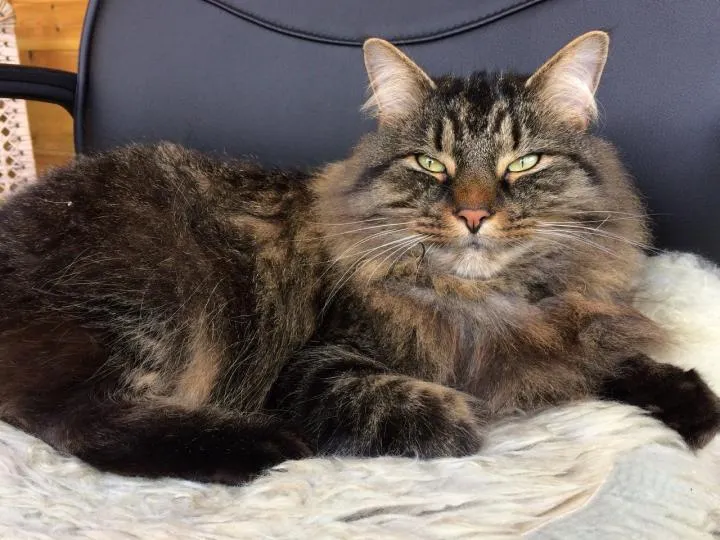Scientists have discovered narrowing your eyes is the best way to build a rapport with cats.
In a study by the universities of Portsmouth and Sussex, researchers found that the technique mimics what is known as a cat smile – referred to as a ‘slow blink’ – and it appears to help to form a bond between the human and the cat.
“As someone who has both studied animal behaviour and is a cat owner, it’s great to be able to show that cats and humans can communicate in this way," said Professor Karen McComb, from the School of Psychology at the University of Sussex, who supervised the work.
“It’s something that many cat owners had already suspected, so it’s exciting to have found evidence for it."
Read more about cats:
“This study is the first to experimentally investigate the role of slow blinking in cat–human communication. And it is something you can try yourself with your own cat at home, or with cats you meet in the street. It’s a great way of enhancing the bond you have with cats.
“Try narrowing your eyes at them as you would in a relaxed smile, followed by closing your eyes for a couple of seconds. You’ll find they respond in the same way themselves and you can start a sort of conversation.”
The research team, led by Prof McComb and Dr Tasmin Humphrey, animal behaviour scientists at the University of Sussex, undertook two experiments for the study published in the Nature journal Scientific Reports.
The first revealed that cats were more likely to slow blink at their owners after their owners have slow blinked at them, compared to when they do not interact at all.
The second experiment, this time with a researcher from the psychology team, found that the cats were more likely to approach the experimenter’s outstretched hand after they had slow-blinked at the cat, compared to when they had adopted a neutral expression.

Dr Humphrey said: “Understanding positive ways in which cats and humans interact can enhance public understanding of cats, improve feline welfare, and tell us more about the socio-cognitive abilities of this under-studied species.
“Our findings could potentially be used to assess the welfare of cats in a variety of settings, including veterinary practices and shelters.
“In terms of why cats behave in this way, it could be argued that cats developed the slow blink behaviours because humans perceived slow blinking as positive.
“Cats may have learned that humans reward them for responding to slow blinking. It is also possible that slow blinking in cats began as a way to interrupt an unbroken stare, which is potentially threatening in social interaction.”
Does my cat only like me for the food?
Would it be so bad if this were the case? Acquiring nutrition is, after all, the daily struggle that all life on Earth faces. In fact, food is what first brought humans and cats together. Chemical analysis of the bones of 5,300-year-old cats from China has shown that these ancient felines were rodent-hunters that lived within grain stores. In essence, we gave them shelter and they took care of the pests.
As time passed, in Western cultures at least, house cats became selected for cuddles as well as their claws. And, from this point onwards, something deeper than cupboard love appears to have emerged.
Just as with dogs, domestication of cats has unlocked a suite of kittenish behaviours. These include grooming, play-fighting and bringing home half-dead mice for a spot of impromptu playtime. These behaviours are about more than food – they’re about family.
In September 2019, scientists announced that cats appear to display traits of the “secure attachment” seen in dogs, where the presence of a human caregiver prompts behaviours signalling security and calmness.
There’s even separate evidence that cats, upon receiving a stroke, get a sudden dose of brain hormones like we humans receive when around our loved ones. So perhaps now, canines have a rival in pursuit of the title of being humankind’s best friend.
Read more: